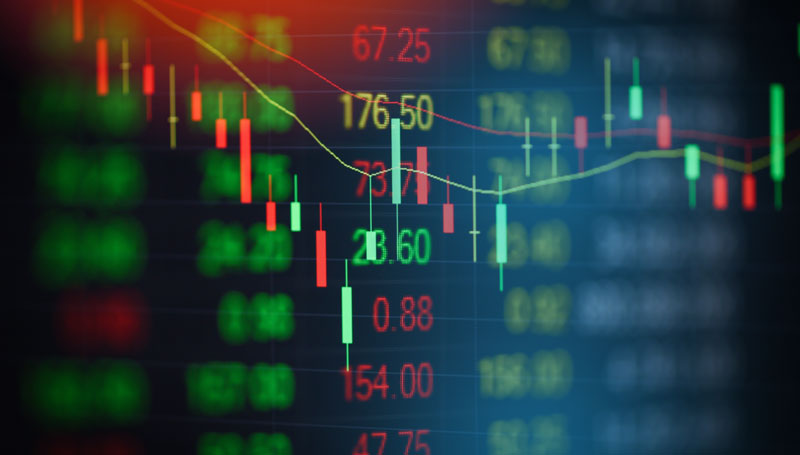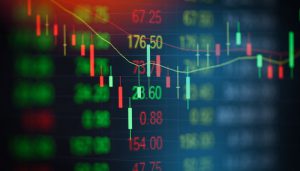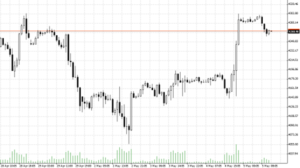

05.05.2022 – So it has done it: the Federal Reserve has raised interest rates by 50 basis points for the first time since 2000. And the stock markets are celebrating – apparently that’s a paradox. But it fits together very well, because many investors had feared even more drastic steps. The question is whether this has finally eliminated interest rate fears.
The market is likely to ponder the new situation for a while yet. Although the indices reacted yesterday with a large plus. Today, Thursday, however, U.S. futures trended weaker for the time being. Nevertheless: Yesterday, the in the S&5 500 marked the largest daily gain on an interest rate hike date since November 1978, according to “ZeroHedge”. You can see the reaction here very nicely in the hourly chart of the SPX.

Source: Bernstein Bank GmbH
The reasons for the positive development: Fed Chairman Jerome Powell rejected speculation about a 75 basis point rate hike in one step in the near future. He said, “A 75 basis point increases is not something the committee is actively considering” and added, “next couple of meetings”, would bring 50-point hikes.
Tightening as expected
In addition, the tightening turns out to be about as expected. Its balance sheet, which has grown nearly $9 trillion in the wake of the Corona prop, the Fed now wants to shrink rapidly. Starting in June, a total of $47.5 billion worth of maturing bonds each month will not be renewed, the central bank announced. By September, the monthly total is expected to pick up to $95 billion. Rumors of deeper and faster cuts had been circulating on the trading floor. Powell also made it clear that he sees the risk of a recession – which hopefully eliminates the danger of an overreaction.
Excessive pessimism
Steve Englander of Standard Chartered commented thus: Many investors would have feared a switch to 75 points and a tightening well above neutral. “So it is fair to say that positioning and excess pessimism reflect a big part of the market reaction. (…) we also saw a few tentative indications that the Fed sees a little more risk of a slowdown (or at least a moderation in activity), and that it did not want to endorse the most hawkish views under discussion at this point. (…) Overall, the tone was much more balanced than at the January and March FOMC meetings.”
Too much optimism?
However, this is by no means an all-clear signal for the bulls. In May 2000, at the last 50-point step, the interest rate had risen to 6.5 percent – shortly before the bursting of the dot-com bubble. Now, however, the U.S. key interest rate is only 0.75 to 1.00 percent. But the inflation rate in the USA reached 8.5 percent in March, the highest level in over 40 years. It is quite possible that inflation will jump even higher because of the Ukraine war and new Corona supply chain issues. At the same time, the Fed’s tightening will for the time being withdraw a lot of liquidity from the markets.
The conclusion from all this is that the Fed has calmed the nerves for now. Whether it will stay that way remains to be seen. The Bernstein Bank wishes successful trades and investments!
Important Notes on This Publication:
The content of this publication is for general information purposes only. In this context, it is neither an individual investment recommendation or advice nor an offer to purchase or sell securities or other financial products. The content in question and all the information contained therein do not in any way replace individual investor- or investment-oriented advice. No reliable forecast or indication for the future is possible with respect to any presentation or information on the present or past performance of the relevant underlying assets. All information and data presented in this publication are based on reliable sources. However, Bernstein Bank does not guarantee that the information and data contained in this publication is up-to-date, correct and complete. Securities traded on the financial markets are subject to price fluctuations. A contract for difference (CFD) is also a financial instrument with leverage effect. Against this backdrop, CFD trading involves a high risk up to the point of total loss and may not be suitable for all investors. Therefore, make sure that you have fully understood all the correlating risks. If necessary, ask for independent advice. CFDs are complex instruments and are associated with the high risk of losing money quickly because of the leverage effect. 68% of retail investor accounts lose money trading CFD with this provider. You should consider whether you understand how CFD work and whether you can afford to take the high risk of losing your money.7
